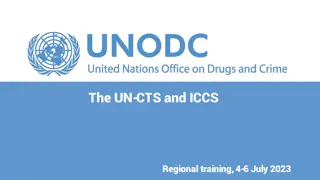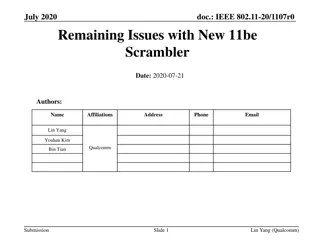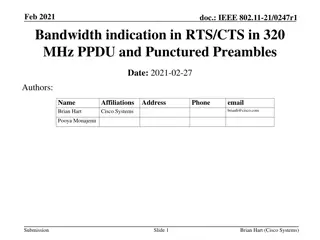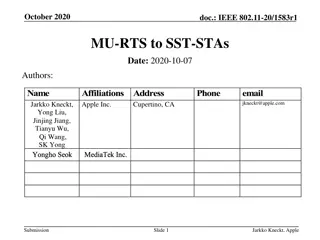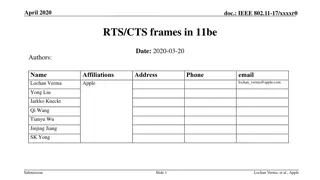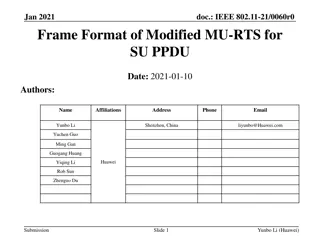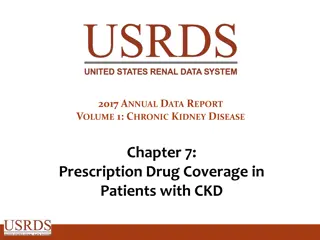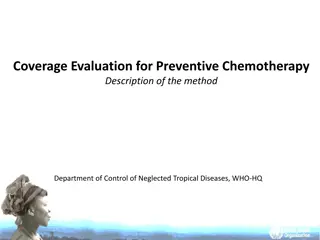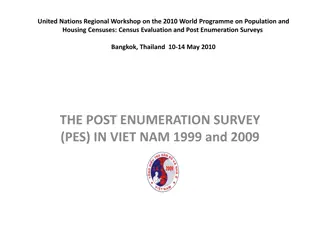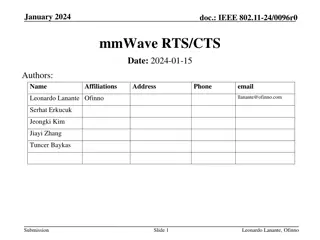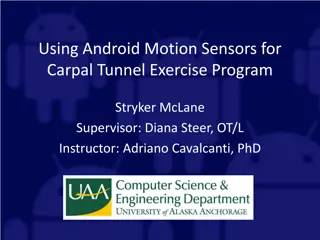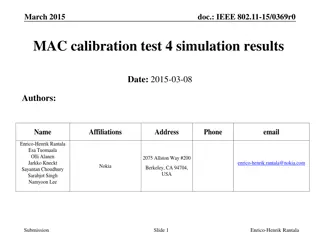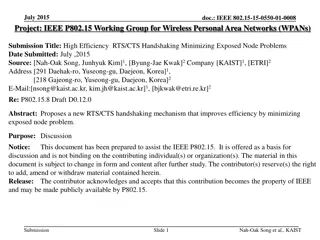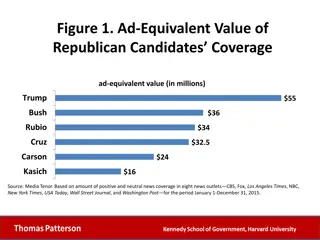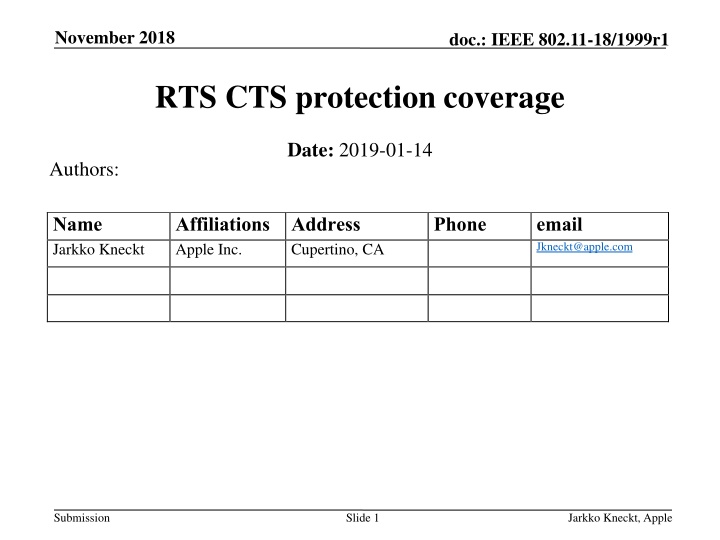
IEEE 802.11-19 RTS CTS Protection in WLAN Networks
Explore the IEEE 802.11-19 standard focusing on RTS CTS signaling, protection areas, and potential interference issues. Learn about the importance of maintaining a consistent protection area around CTS transmitters to avoid unreliable signaling and degraded WLAN performance in OBSS environments.
Download Presentation

Please find below an Image/Link to download the presentation.
The content on the website is provided AS IS for your information and personal use only. It may not be sold, licensed, or shared on other websites without obtaining consent from the author. If you encounter any issues during the download, it is possible that the publisher has removed the file from their server.
You are allowed to download the files provided on this website for personal or commercial use, subject to the condition that they are used lawfully. All files are the property of their respective owners.
The content on the website is provided AS IS for your information and personal use only. It may not be sold, licensed, or shared on other websites without obtaining consent from the author.
E N D
Presentation Transcript
November 2018 doc.: IEEE 802.11-18/1999r1 RTS CTS protection coverage Date: 2019-01-14 Authors: Name Jarkko Kneckt Affiliations Address Apple Inc. Phone email Jkneckt@apple.com Cupertino, CA Submission Slide 1 Jarkko Kneckt, Apple
November 2018 doc.: IEEE 802.11-18/1999r1 Problem statement 802.11ax OBSS PD rules allow in some cases OBSS STAs to reset the NAV when the STA has received CTS frame RTS CTS signaling protects smaller area than BAR BA signaling The protection area of around the CTS transmitter should not leave unprotected holes OBSS STAs located in the holes can cause higher interference making the RTS CTS signaling unreliable Submission Slide 2 Jarkko Kneckt, Apple
November 2018 doc.: IEEE 802.11-18/1999r1 802.11ax D3.3 standard text The highlighted text allows OBSS STAs that received both RTS and CTS to reset NAV Submission Slide 3 Jarkko Kneckt, Apple
November 2018 doc.: IEEE 802.11-18/1999r1 RTS CTS protection area Approximation of an area where STA 1 OBSS PD capable STAs have NAV set after an RTS CTS signaling from OBSS RTS STA 2 CTS Submission Slide 4 Jarkko Kneckt, Apple
November 2018 doc.: IEEE 802.11-18/1999r1 Protection areas of TXOP starting with BAR BA and RTS CTS signaling Small protection area of RTS CTS may degrade WLAN throughputs The unprotected area is close to both the receiver and the transmitter 802.11ax non-AP STAs get solid protection area around the receiver by initiating TXOPS with BAR BA signaling If a BAR BA signaling initiates a TXOP, the BA transmitter may not consider whether channel is IDLE Lack of CS at BA transmitter may not protect the ongoing transmissions Holes in the channel reservation area should not drive STAs to initiate TXOPs with BAR BA signaling instead of RTS CTS signaling Approximation of an area where STA 1 OBSS PD capable STAs have NAV set after an RTS CTS signaling from OBSS RTS STA 2 CTS Submission Slide 5 Jarkko Kneckt, Apple
November 2018 doc.: IEEE 802.11-18/1999r1 Summary The protection area in RTS CTS signaling should not leave holes around the CTS transmitter The holes may allow some OBSS STAs to use different protection level which degrades the reliable reception of the data frames Submission Slide 6 Jarkko Kneckt, Apple
November 2018 doc.: IEEE 802.11-18/1999r1 Straw poll Do you agree to delete the highlighted text from the 802.11ax specification? Submission Slide 7 Jarkko Kneckt, Apple

